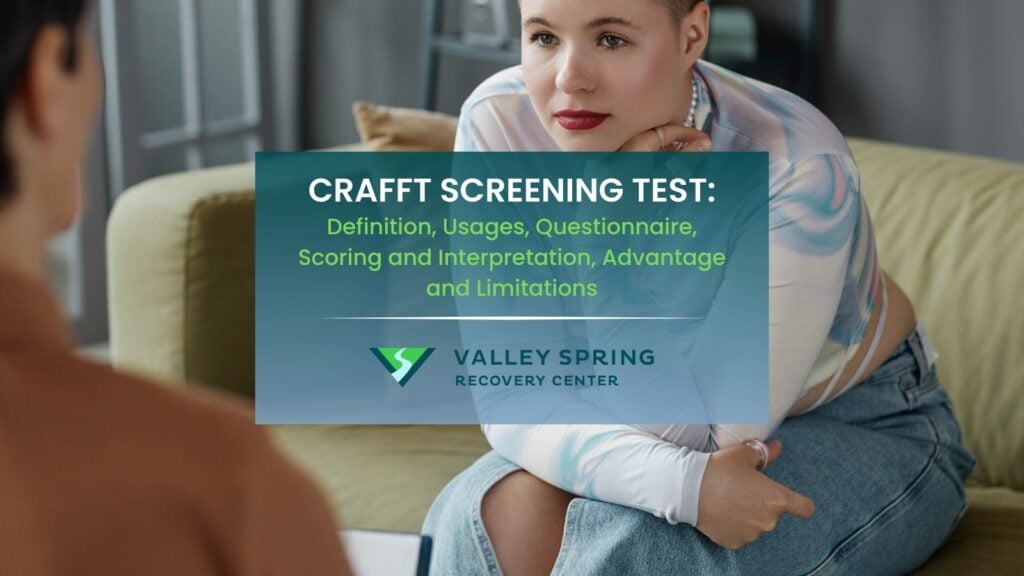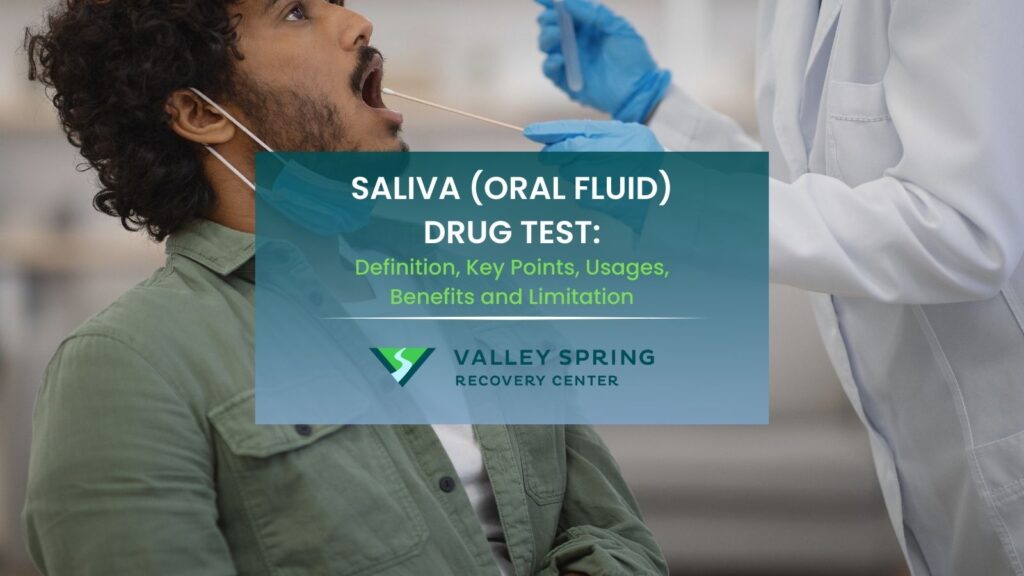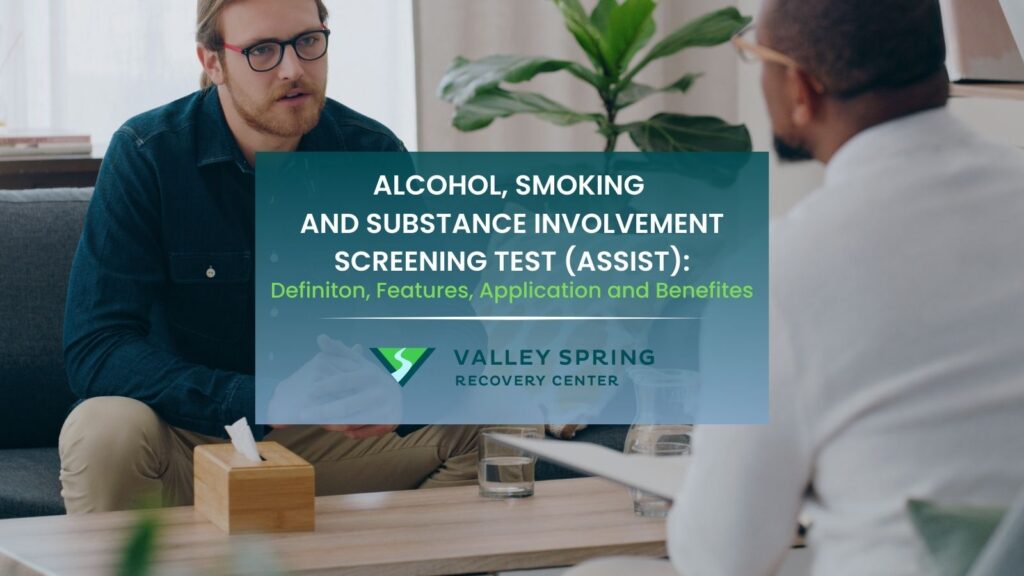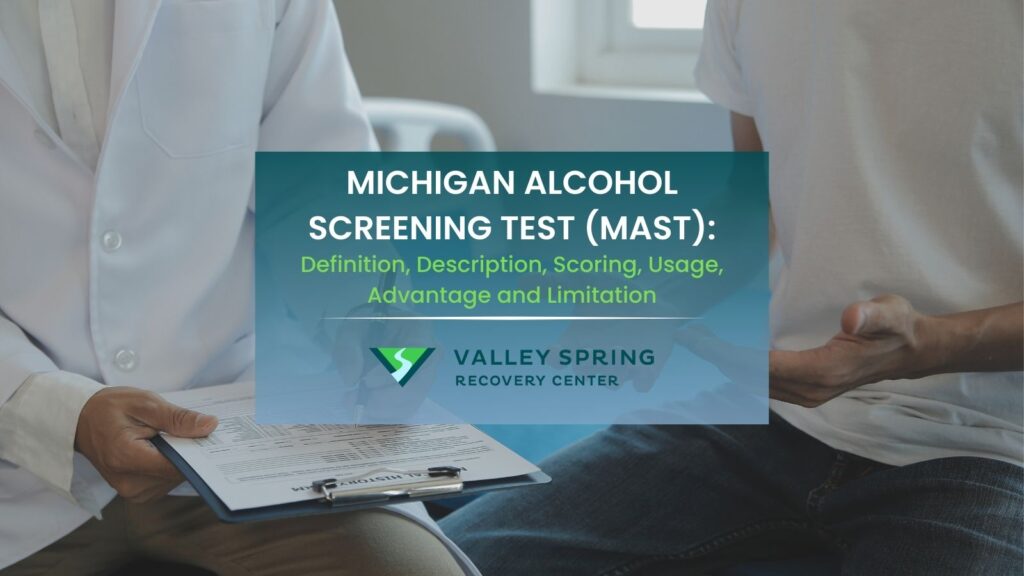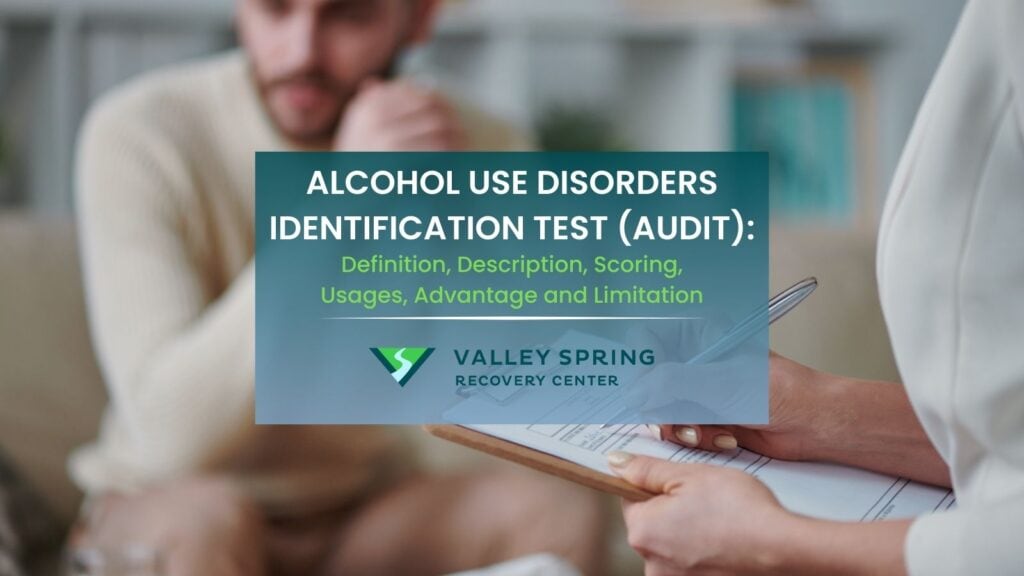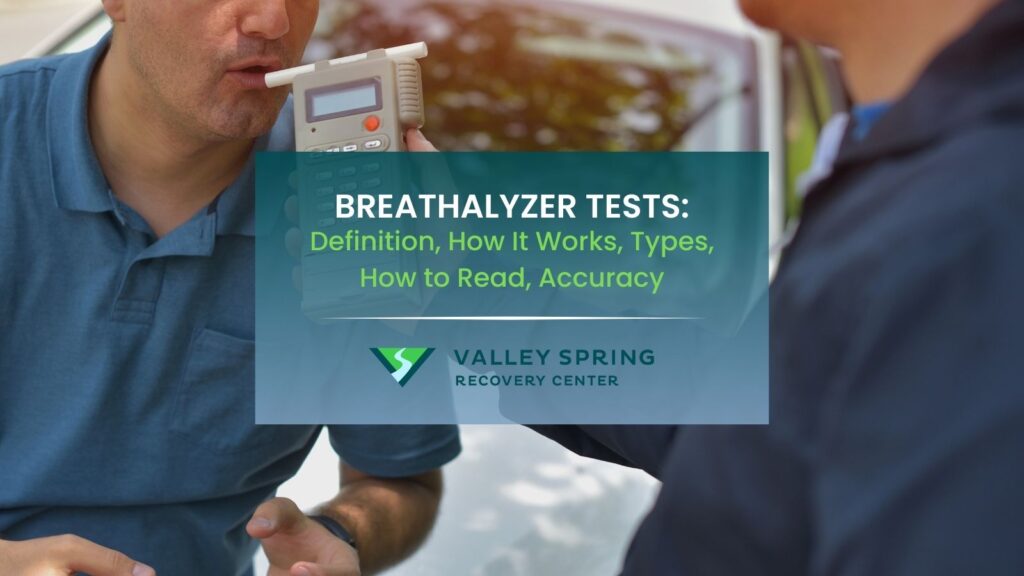The CRAFFT test is a screening tool used to identify potential substance abuse issues in adolescents aged 12-21. It consists of 6 questions that assess alcohol and drug use behaviors, providing a quick and standardized assessment of substance abuse risk. It has been implemented as part of universal screening efforts in thousands of medical and community health settings.
The CRAFFT test is scored by assigning a score of 1 for each “yes” response and 0 for each “no” response, with the total score indicating the level of concern regarding substance abuse.
The benefits of the CRAFFT screening test include early identification, standardized and efficient administration, sensitivity and specificity in detecting substance abuse issues among adolescents, and facilitating communication and appropriate intervention.
The limitations of the CRAFFT screening test include reliance on self-reported responses, potential for underreporting or false-negative results, limited scope in assessing other addictive behaviors, cultural and individual differences, lack of diagnostic capability, and potential for false-positive results.
What is the CRAFFT Screening Test?
The CRAFFT screening test is a tool used to identify potential substance abuse problems in adolescents. It consists of a series of questions designed to assess whether a young person engages in risky behaviors related to alcohol or drug use.
The term “CRAFFT” is an acronym formed from the first letter of each question:
- C – Have you ever ridden in a “Car” driven by someone (including yourself) who was high or had been using drugs or alcohol?
- R – Do you ever use alcohol or drugs to “Relax,” feel better about yourself, or fit in?
- A – Do you ever use alcohol or drugs while you are “Alone?”
- F – Do you ever “Forget” things you did while using alcohol or drugs?
- F – Do your “Family or Friends” ever tell you that you should cut down on your drinking or drug use?
- T – Have you ever gotten into “Trouble” while you were using alcohol or drugs?
By asking these questions, the CRAFFT test aims to identify risky patterns of substance use. If a young person answers “yes” to two or more of the six questions, it suggests a higher likelihood of substance abuse or dependence and is an indication of the need for further evaluation or intervention.
How is the CRAFFT Screening Test Used?
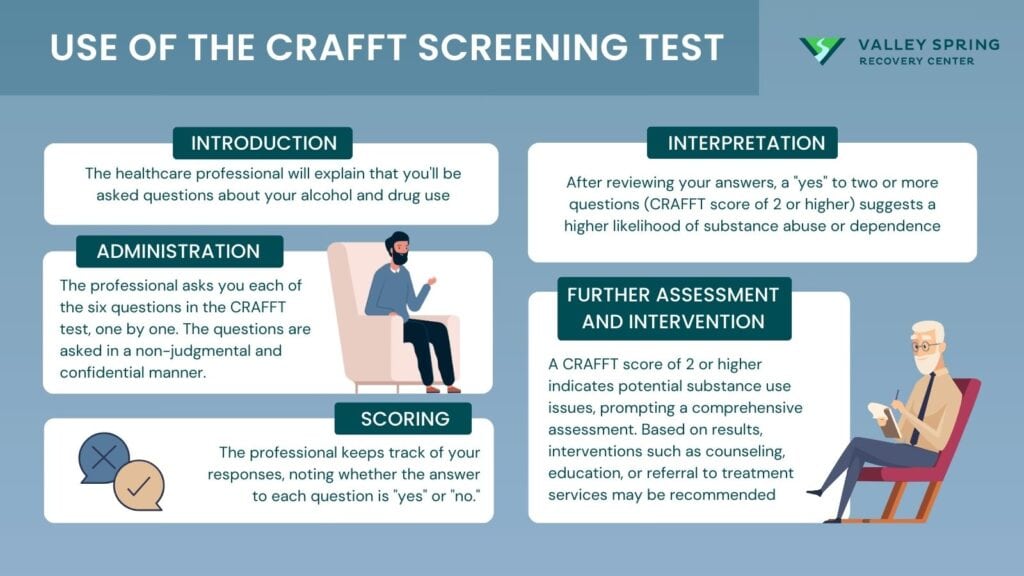
The CRAFFT screening test is used by healthcare professionals in 5 steps:
- Introduction: The healthcare professional will explain to you that you will be asked a series of questions about your alcohol and drug use.
- Administration: The professional asks you each of the six questions in the CRAFFT test, one by one. The questions are asked in a non-judgmental and confidential manner.
- Scoring: The professional keeps track of your responses, noting whether the answer to each question is “yes” or “no.”
- Interpretation: Once all the questions have been asked, the professional reviews your answers. If you answer “yes” to two or more of the questions (CRAFFT score of 2 or higher), it suggests a higher likelihood of substance abuse or dependence.
- Further Assessment and Intervention: If you score 2 or higher on the CRAFFT test, it indicates a potential problem with substance use. The healthcare professional proceeds to conduct a more comprehensive assessment to gather additional information about your substance use patterns, related behaviors, and potential consequences. Based on the assessment results, appropriate interventions like counseling, education, or referral to specialized treatment services, is recommended.
The CRAFFT screening test is just one tool among many that healthcare professionals use to assess substance abuse in adolescents. It helps initiate conversations about alcohol and drug use, identify potential problems, and guide further evaluation and intervention.
How Efficient is the CRAFFT Screening Test in Substance Abuse Treatment?
The original validation study conducted by Knight JR, et al, titled, “Validity of the CRAFFT substance abuse screening test among adolescent clinic patients.” Arch Pediatr Adolesc Med. 2002 Jun;156(6):607-14 demonstrated its effectiveness in identifying substance abuse problems in adolescents. The study found that a CRAFFT score of 2 or higher had good sensitivity and specificity for detecting substance use disorders.
The CRAFFT test has been scrutinized in several ways to ascertain its validity and effectiveness in determining substance abuse patterns.
The American Academy of Pediatrics (AAP) has recommended the use of the CRAFFT screening test as part of routine adolescent healthcare. The AAP’s endorsement illustrates the recognition of the test’s efficiency and relevance in identifying substance abuse issues in young people.
How is the CRAFFT Screening Test Scored and Interpreted?
The CRAFFT screening test is scored and interpreted based on the adolescent’s responses to the 6 questions and here’s how the scoring and interpretation looks like:
1. Scoring
For each question, the adolescent’s response is scored as either “yes” or “no.” A score of 1 is assigned for each “yes” response, and a score of 0 is assigned for each “no” response. The scores for all six questions are then added together to obtain the total CRAFFT score.
2. Interpretation
The interpretation is as follows:
- A CRAFFT score of 0: This indicates that the adolescent has answered “no” to all 6 questions. It suggests a lower likelihood of significant substance abuse issues.
- A CRAFFT score of 1: This indicates that the adolescent has answered “yes” to one question. While it doesn’t indicate a high level of concern, it still warrants further assessment or monitoring if there are other physical or behavioral symptoms noticed.
- A CRAFFT score of 2 or higher: This indicates that the adolescent has answered “yes” to two or more questions. It suggests a higher likelihood of substance abuse or dependence and indicates the need for further evaluation or intervention.
Note that the CRAFFT screening test is primarily a screening tool and not a diagnostic tool. A comprehensive assessment by a healthcare professional is necessary to confirm a diagnosis and develop an appropriate treatment plan.
Ultimately, the scoring and interpretation of the CRAFFT screening test must be conducted by qualified healthcare professionals who are trained in substance abuse assessment and treatment.
What are the Benefits of the CRAFFT Screening Test?
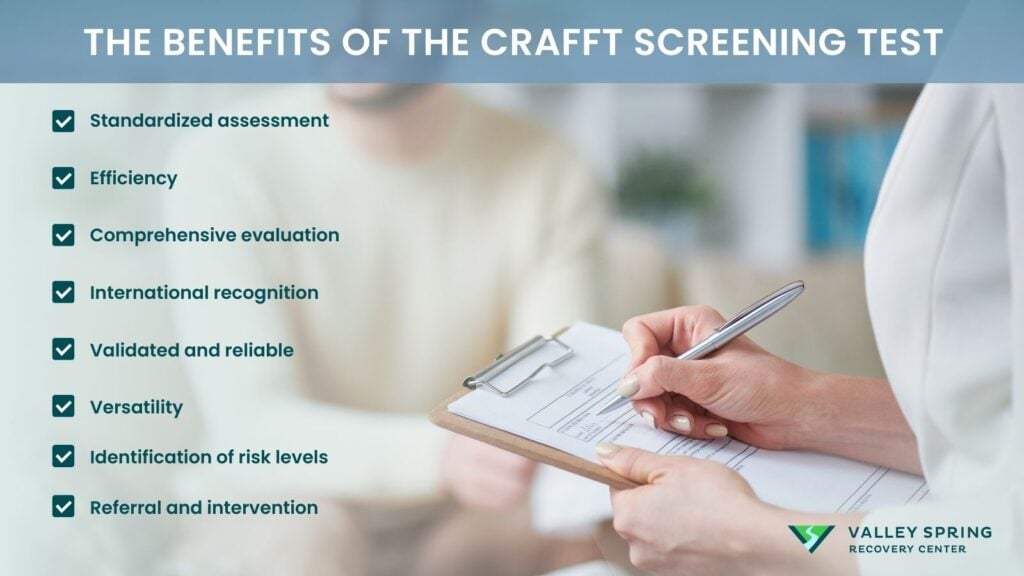
The benefits of the CRAFFT screening test include earl identification, standardized and structured questions, brief and time efficient, easy communication and awareness and helps to identify if one needs immediate intervention or further assessment. The benefits of the CRAFFT test include:
1. Early Identification
The test provides an opportunity for early identification of potential substance abuse problems in adolescents. By detecting risky behaviors and patterns of alcohol or drug use at an early stage, interventions are implemented promptly to prevent the escalation of substance abuse issues.
2. Standardized and Structured
The CRAFFT test follows a standardized format with predetermined questions. This structure ensures consistency in screening and allows for easy comparison of results across different individuals. It helps healthcare professionals conduct assessments in a systematic and efficient manner.
3. Brief and Time-Efficient
The test consists of only six questions, making it relatively quick to administer. This brevity is advantageous in busy healthcare settings, allowing professionals to incorporate the screening into routine assessments without consuming excessive time.
4. Sensitivity and Specificity
The CRAFFT test has demonstrated good sensitivity and specificity in identifying substance abuse problems among young people. Sensitivity means its ability to correctly identify if you have substance abuse issues, while specificity refers to its ability to correctly identify if you don’t have those issues. The test’s performance characteristics contribute to its effectiveness as a screening tool.
5. Facilitates Communication and Awareness
The test prompts discussions about alcohol and drug use between you and your doctor. It helps raise awareness among young people about the potential risks associated with substance abuse and provides an opportunity for open dialogue, education, and intervention.
6. Guides Further Assessment and Intervention
The CRAFFT test serves as a valuable screening tool to identify if you require further assessment or intervention. It helps guide your doctor in determining the appropriate level of care, such as counseling, education, or referral to specialized substance abuse treatment services.
What are the Limitations of the CRAFFT Screening Test?
The limitations of the CRAFFT screening test include self reported responses, limited scope, cultural and individual differences, and lack of diagnostic capabilities. Here are a few limitations associated with the CRAFFT screening test:
1. Self-Reported Responses
The CRAFFT test relies on self-reported responses from you, which is subject to bias or inaccurate reporting. Some adolescents are hesitant to disclose their substance abuse due to fear of judgment or other reasons. This potentially leads to underreporting or false-negative results.
2. Limited Scope
According to research by Shenoi et al, titled Predictive Validity of the CRAFFT for Substance Use Disorder (2019), One disadvantage of the CRAFFT is that youth may not consider illicit drugs to include over-the-counter medications, synthetic substances, herbal preparations, or prescription medications, misuse of which has increased in recent times. This limitation suggests that the CRAFFT may not fully capture the range of substances that could be abused.
3. Cultural and Individual Differences
The CRAFFT test doesn’t fully account for cultural or individual differences in the perceptions and experiences of substance abuse. The questions in the test are designed to be broadly applicable, but they don’t capture the nuances of diverse populations or specific circumstances.
The same study by Knight JR, et al included 538 participants aged 14 to 18 years, with a majority of female participants (68.4%) and participants from racial and ethnic minority groups (75.8%). The validity of the CRAFFT test was not significantly affected by age, sex, or race, as the results were the same across the board.
4. Lack of Diagnostic Capability
The CRAFFT test is a screening tool and not a diagnostic instrument. While it identifies individuals who are at risk for substance abuse, it cannot provide a definitive diagnosis. A comprehensive assessment by a qualified healthcare professional is necessary for accurate diagnosis and treatment planning.
5. Limited Predictive Value
Although the CRAFFT test identifies if you’re engaging in risky behaviors related to substance abuse, it doesn’t provide direct information about the severity or future course of the problem.
6. Potential False-Positive Results
The CRAFFT test yields false-positive results if you’re not completely honest with your answers. This means it identifies you as having a potential substance abuse problem when you may not. False-positive results will lead to unnecessary interventions or anxiety for you and your family.
What substances does the CRAFFT screening test assess?
The CRAFFT screening test is designed to assess alcohol and drug use in adolescents. It covers a range of substances, including alcohol, marijuana, and other drugs. The test explores behaviors and experiences related to substance use, such as drinking to the point of feeling drunk, experiencing negative consequences from substance use, or engaging in risky behaviors while under the influence.
Is the CRAFFT test valuable for non-English-speaking individuals?
Yes, the CRAFFT test has been proven in a research by Rial A, et al, titled Empirical validation of the CRAFFT abuse screening test in a Spanish sample: Psychometric properties and recommendations. Adicciones. (2018) to be a valid and reliable tool for screening substance abuse in Spanish adolescents. It demonstrated good psychometric behavior, with high levels of sensitivity and specificity.
How long does it take to complete the CRAFFT screening test?
The CRAFFT screening test takes a few minutes to complete. It consists of six questions that can be administered relatively quickly. The brevity of the test allows for efficient screening in various healthcare settings, making it convenient to incorporate into routine assessments without consuming excessive time.
How does the use of breathalyzer tests complement the CRAFFT Screening Test in comprehensive substance use assessments?
The use of breathalyzer tests complements the CRAFFT Screening Test in comprehensive substance use assessments by providing immediate, objective data on alcohol consumption. While the CRAFFT test identifies patterns of risky substance use behavior and potential addiction issues through a structured questionnaire, breathalyzer tests offer real-time evidence of current alcohol levels. This combination allows for a more thorough assessment, as breathalyzer results can validate self-reported alcohol use identified by the CRAFFT test. Together, these tools provide a fuller picture of an adolescent’s substance use, aiding in more accurate diagnosis and targeted intervention.
How can the CRAFFT Screening Test and SBIRT be integrated into school-based health programs to prevent adolescent substance use?
Integrating the CRAFFT Screening Test and SBIRT into school-based health programs can effectively prevent adolescent substance use by creating a proactive approach to early identification and intervention. The CRAFFT test can be administered by school health professionals during routine health checks to identify students at risk for substance use disorders. Following the screening, the SBIRT model can be employed to provide immediate brief interventions or referrals to appropriate treatment services. This school-based approach ensures that adolescents receive timely support in a familiar environment, enhancing the accessibility and impact of substance use prevention efforts.
Is the CRAFFT screening test appropriate for all age groups?
The CRAFFT screening test is specifically designed for adolescents aged 12-21. It focuses on assessing alcohol and drug use behaviors in this age group, taking into account the unique challenges and vulnerabilities they face. While it is not intended for use with younger children or adults outside of the specified age range, there are other validated screening tools available for substance abuse assessment in different age groups.
Can the CRAFFT screening test be self-administered?
Yes, the CRAFFT screening test can be self-administered by adolescents. The questions are structured in a way that allows individuals to read and respond to them independently. This is particularly useful in certain settings where self-assessment is preferred or when privacy and confidentiality are important considerations.
According to research by Harris SK, et al, titled Screening and brief intervention for alcohol and other abuse. Adolesc Med State Art Rev. 2014;25(1):126-156, computer self-administered versions of screening tools like the CRAFFT are quicker to complete compared to physician-conducted interviews.
How do the CRAFFT score and breathalyzer result influence each other in assessing substance use?
A positive CRAFFT score indicates an elevated risk of substance use problems. If the breathalyzer also detects alcohol, this reinforces the need for further assessment and potential treatment. Conversely, a negative breathalyzer despite a positive CRAFFT may suggest other drug use issues requiring intervention.
Who should be screened with CRAFFT?
The CRAFFT screening test is recommended for all adolescents and young adults, typically starting at age 12. It is primarily used in pediatric, adolescent medicine, and school-based health settings.
How is the CRAFFT scored?
Each “yes” response on the CRAFFT questionnaire is scored as 1 point. A total score of 2 or higher is considered a positive screen, indicating the need for further assessment and possible intervention.
How does a breathalyzer work?
Breathalyzers use fuel cell or semiconductor sensor technology to detect the presence and concentration of alcohol in a person’s exhaled breath. The device measures the amount of alcohol vapor and converts that to an estimated BAC level.
How accurate are breathalyzer results?
When properly calibrated and used, breathalyzers are generally considered quite accurate, with an error margin of around 0.01% BAC. However, factors like hydration levels, body temperature, and the timing of the test can impact the results.
Dr. Michael Olla
All author postsShare This Post

